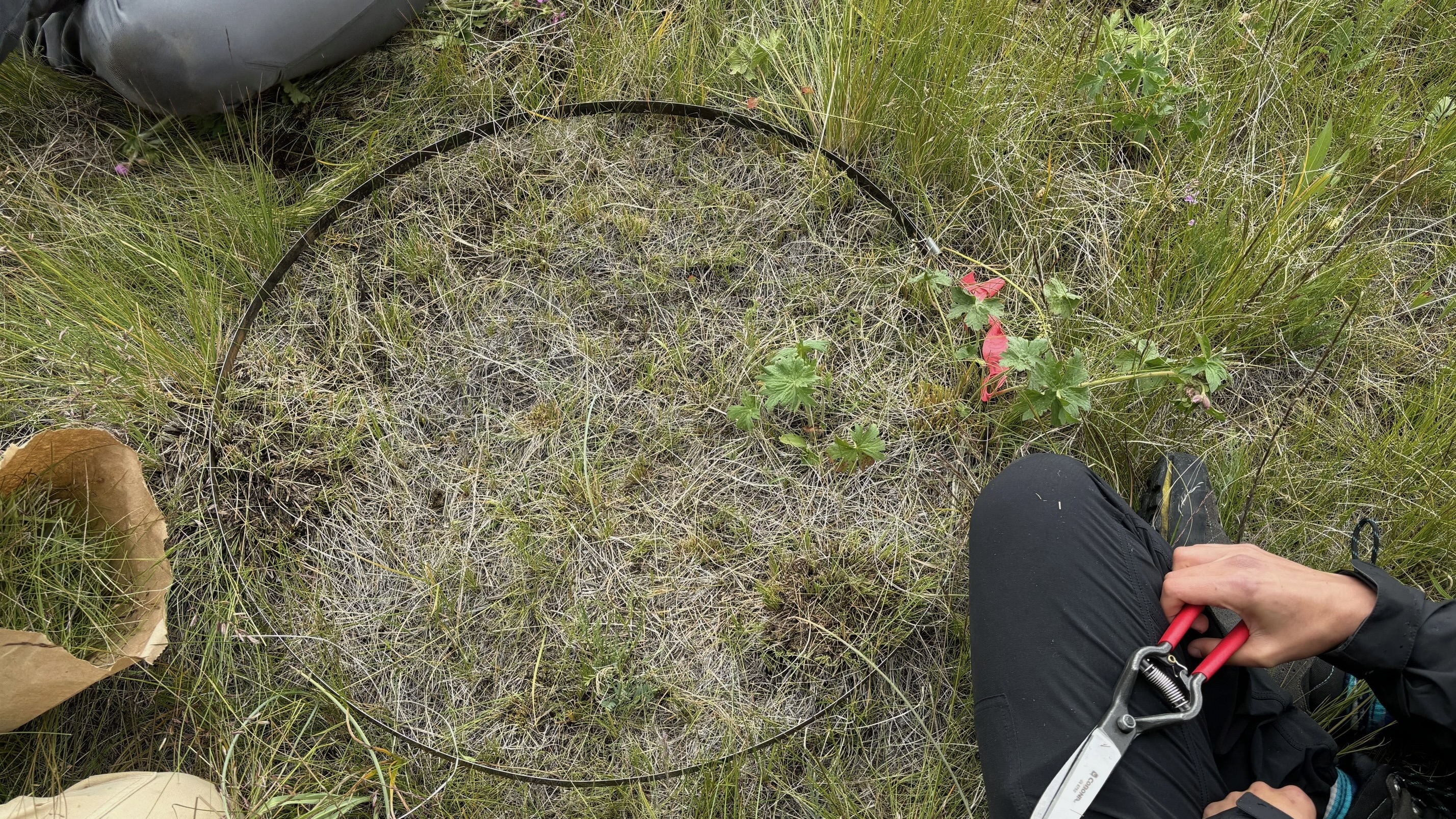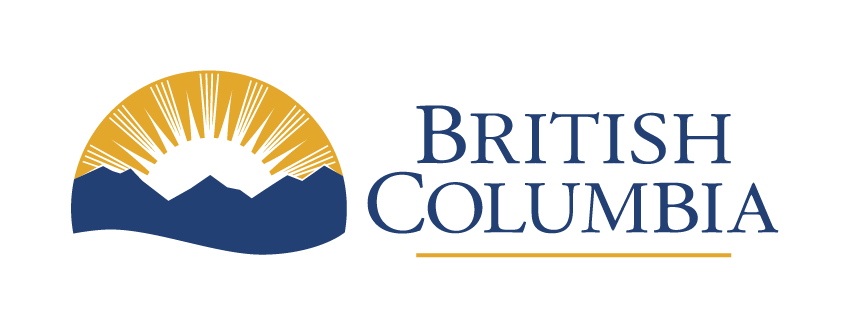Forage Supply Analysis
Modern rangeland management requires research and analysis, rangeland inventories and forage supply analysis. The accumulated data supports informed decision-making and is shared with other government agencies and outside land managers.
The Range Program uses inventory tools to support conducting forage supply analyses to evaluate quantity and quality of available forage.
Range Vegetation Inventory (RVI)
This data-driven process has several steps and uses standardized data collection methods and tools.
Creating a RVI requires good knowledge of the land and its condition. Each RVI combines spatial analysis, fieldwork, and relies on the integration of local knowledge. The RVI considers existing forage productivity, rangeland health, limiting factors, and safe use limits.
 Figure 1: Sample plot for rangeland clipping consists of 0.25 m square hoop. Palatable species are clipped, dried, and measured.
Figure 1: Sample plot for rangeland clipping consists of 0.25 m square hoop. Palatable species are clipped, dried, and measured.
Methodology
- Stratifying Rangeland into coarse descriptions of the vegetation community and estimating forage production. Reference to known Range Types may support this;
- Conducting fieldwork to verify the above stratification, identify the plant community, to collect data where forage production is unknown, and to assess rangeland condition or health;
- Extrapolating data and accounting for limiting factor deductions, safe use limits, and other relevant data;
- Calculating total forage availability;
- Communicating results to Range professionals, natural resource managers, and others.
Forage Supply: The Range Vegetation Analysis provides an overview.
Several database structures are used to collect data.
1. Sampling data collected in the field via clipping of plots is entered into the clipping database following the clipping data dictionary
2. The Range Vegetation Inventory is a spatial layer with attributes captured in the RVI data dictionary
A full Range type description glossary
Definitions of terms:
Animal Unit Month: The amount of oven-dry forage (forage demand) required by one animal unit for a standardized period of 30 animal-unit-days. Abbr. AUM. The term AUM is commonly used in three ways: (a) stocking rate, as in "X acres per AUM"; (b) forage allocations, as in "X AUMs in Allotment A"; (c) utilization, as in "X AUMs taken from Unit B." (SRM, 1998).
Carrying Capacity: The average number of livestock and/or wildlife that may be sustained on a management unit compatible with management objectives for the unit. In addition to site characteristics, it is a function of management goals and management intensity. (SRM) The amount of forage produced annually in a management unit is only one attribute used to determine carrying capacity. The forage also has to be available to the animals. On many rangelands, the carrying capacity may be less than forage production would indicate because parts of the management unit are inaccessible to grazing animals. In essence, forage is present but unavailable (SRM, 1998).
Limiting Factor: Any environmental factor which exists at suboptimal level and thereby prevents an organism from reaching its full biotic potential (SRM, 1998).
Safe Use Factor: The percentage of the total biomass production that is available for utliization by livestock. The safe use factor consider the biophysical constraints and the ecological goals of sustainable health and proper functioning of the rangeland unit. The remaining biomass production is allocated for the maintenance of ecological functions (e.g. hydrological function, soil protection), and plant community services (e.g. habitat maintenance, wildlife forage use, etc.)(Alberta, 2004).
Primary Range: Areas which animals prefer to use when management is limited. Primary range will be overused before secondary range is fully used (SRM, 1998).
Proper Use Factor: An index to the grazing use that may be made of a specific forage species, based on a system of range management that will maintain the economically important forage species, or achieve other management objectives such as maintenance of watersheds, recreation values, etc. (SRM, 1998).
Alberta. Rangeland Management Branch. Sustainable Resource Development. 2004. Methodology for Calculating Carrying Capacity and Grazing Capacity on Public Rangelands.
Society for Range Management (SRM). 1998. Glossary of terms used in range management, fourth edition. Edited by the Glossary Update Task Group, Thomas E. Bedell, Chairman. Used with permission.
Contact information
Contact your Natural Resource District and Range Officer if you have questions about rangeland use in a specific Natural Resource District. Please direct general questions to:
Forests.RangeBranch@gov.bc.ca
Range.Practices@gov.bc.ca
Invasive.Plants@gov.bc.ca
Range.GrazingLeases@gov.bc.ca
Range.GrazingPolicy@gov.bc.ca
